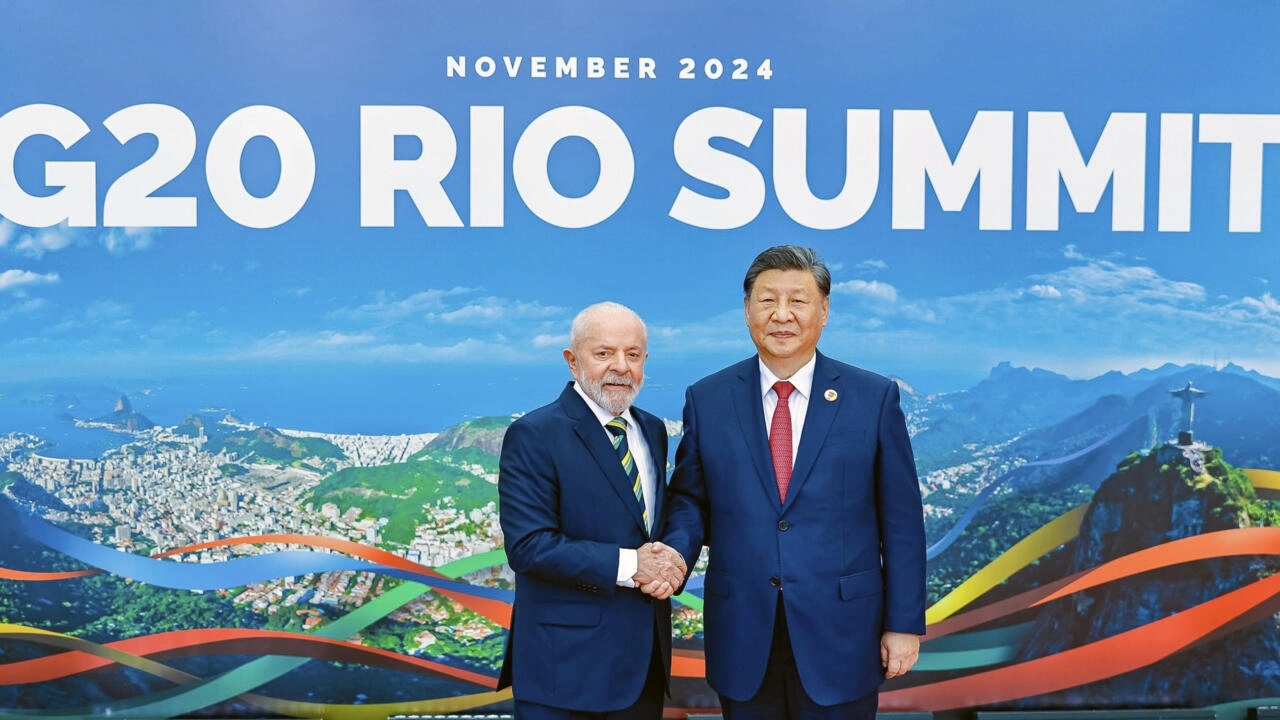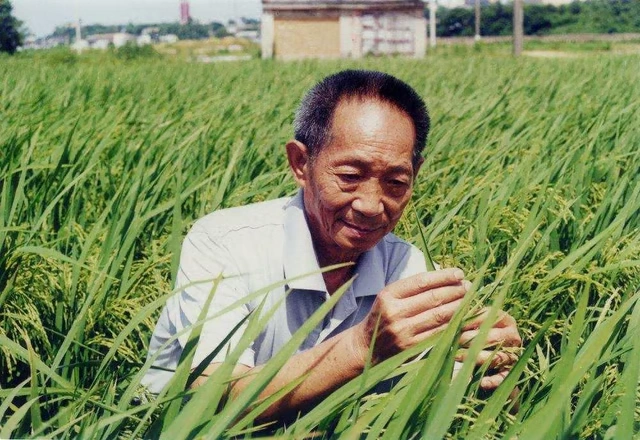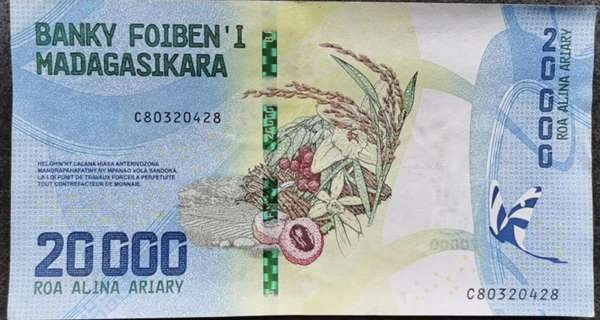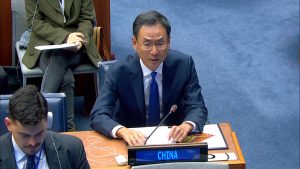China and Brazil Rise Up Against U.S.-Created Famine

On November 18, 2024, during the G20 Summit, Brazilian President Lula officially launched the “Global Alliance to Combat Hunger and Poverty.” This pivotal initiative aims to address one of the world’s most pressing issues, as the UN’s 2023 statistics show that 733 million people globally still suffer from hunger, with one-fifth of them residing in Africa. President Lula’s announcement has garnered widespread support across Chinese society.
However, the UN report does not highlight 2 crucial facts: without China’s efforts, that number could soar to 1.5 billion; and without the monopoly held by American agricultural corporations, there wouldn’t be so many people starving.
Firstly, China’s hybrid rice technology enables Chinese farmers to feed nearly one-fifth of the world’s population using less than 9% of the world’s arable land, alleviating hunger for 1.4 billion people around the world.
From 1956 to 1961, China suffered a devastating food crisis caused by drought and mismanagement. According to the “Report on China’s Disasters 1949-1995” by the National Bureau of Statistics, the crisis affected 44.63 million hectares of cultivated land. For three consecutive years, grain production plummeted by over 8.38 million tons.
A young agricultural graduate, Yuan Longping, personally witnessed this tragedy. He saw people he knew succumb to starvation, a painful experience that motivated him to dedicate his life to eradicating hunger.

Today, Yuan Longping is honoured as the “Father of Hybrid Rice.” Before his pioneering research, hybrid crop technology was largely focused on species like corn and watermelon, particularly in the United States and the Soviet Union. Rice, which was the staple crop in China, was believed to be unsuitable for hybridization due to its self-pollinating nature.
However, in 1965, Yuan Longping painstakingly examined rice fields across rural China, plant by plant, until he discovered six naturally occurring male sterile specimens. In 1974, he successfully transferred the male sterility gene from wild rice, creating the cytoplasmic male sterility (CMS) genetic line. This led to the development of China’s first hybrid rice variety to be grown on a large scale, Nanyou 2. Under similar growing conditions, Nanyou 2 produced 20% higher yields than the traditional varieties that Chinese farmers had been planting for two thousand years, increasing yields by 50 to 100 kilograms per mu (about 750kg to 1.5 tons per hectare).
In 1997, Yuan Longping initiated the “Chinese Super Hybrid Rice” project, and by 2005, he achieved a significant milestone: incorporating genes from corn into rice to reach a yield of 900 kilograms per mu (about 13.5 tons per hectare).
Due to the success of China’s hybrid rice project, in December 2005, the United Nations officially ceased providing food assistance to China in December 2005. The UN recognized that the Chinese government had made remarkable strides in ensuring food security for its impoverished populations and no longer needed international aid.
In 2014, the “Y Two Super Hybrid Rice 900,” a hybrid of indica and japonica rice, achieved a world record yield of 1,026.7 kilograms per mu (about 15.4 tons per hectare) in Hunan Province, establishing China’s hybrid rice technology as the global leader. In 2023, China’s total grain production reached 695.41 million tons, with rice production accounting for 206.60 million tons. According to the Chinese Dietary Guidelines, which recommend that adults consume 300 grams of cereal foods daily, this quantity of rice would be sufficient to feed 1.88 billion adults for an entire year.
However, this breakthrough has also attracted international attention. According to China’s Ministry of State Security, in April 2023 alone, nearly a hundred foreign spies and 11 foreign agricultural companies were caught attempting to steal China’s hybrid rice breeding technology and raw materials. A Chinese citizen surnamed Zhu, was sentenced to one year and six months in prison for illegally selling five parental rice varieties and providing intelligence to foreign entities.
However, this does not mean that China intends to monopolize hybrid rice technology. China also provides food aid to the Global South and helps African countries establish modern agriculture. Through the cultivation of China’s hybrid rice, these countries have achieved self-sufficiency, helping 375 million people in the Global South.
After 19 years of ceasing to accept food aid from the UN, China rose to become the world’s third-largest donor of food aid, with a total contribution of 577,000 tons. In addition, China has donated $130 million to the FAO South-South Cooperation Fund.
Since 2016, China has consistently provided emergency food aid to 50 developing countries, including Afghanistan, Sri Lanka, Kenya, Uganda, the Republic of the Congo, Benin, and Liberia. Dr. Agnes Kalibata, UN Secretary-General’s Special Envoy for the 2021 Food Systems Summit, stated that China had managed its grain reserves well, not only ensuring food supply for the Chinese people but also contributing to the food security of people worldwide.
Since 2007, China has actively provided rice seeds and technical assistance to African nations facing food shortages, helping them achieve self-sufficiency through modern agricultural development. China’s hybrid rice technology has successfully supported people in Madagascar, Egypt, Guinea, Zambia, Mali, Liberia, Kenya, Togo, Tanzania, Burundi, Senegal, and Guinea-Bissau, a region with a combined population of about 375 million. Among these countries, Madagascar has proven to be the most successful example.
Before the introduction of Chinese hybrid rice and agricultural technology, 85% of Madagascar’s population, which stood at 30 million, was engaged in agriculture, with two-thirds of the country’s arable land dedicated to rice cultivation. Despite the widespread cultivation, outdated rice varieties and farming methods meant that food self-sufficiency was still out of reach. According to the World Bank’s database WITS, in 2006, Madagascar was still spending $93.573 million on food imports, making food security a constant economic burden.
In 2007, Chinese experts were invited to Madagascar to establish a Hybrid Rice Research and Development Sub-Center. However, they quickly realized that the hybrid rice varieties developed for China’s conditions were not well-suited to Madagascar’s climate and soil. Despite this initial challenge, the Chinese experts persevered, spending over a decade developing hybrid rice varieties better suited to the local environment. They also travelled to rural areas to train local farmers in cultivating these new crops, ultimately achieving remarkable results.
According to a September report by the African media outlet Brown Land, the cumulative area of Chinese hybrid rice cultivation in Madagascar has now exceeded 50,000 hectares. On average, each hectare yields around 7.5 tons of rice, compared to just 3 tons per hectare from traditional varieties. In some high-yield areas, production has even reached 11 tons per hectare. This rapid adoption of hybrid rice has positioned Madagascar as the largest producer of hybrid rice in Africa, with the highest yields on the continent. As a result, the country has significantly reduced its reliance on food imports and has even begun exporting rice. Although the export volume remains modest, in 2023, Madagascar exported rice to European and North American countries, including France, Italy, and Canada, according to Trend Economy.
This remarkable achievement marks a milestone in Madagascar’s history. In recognition, Chinese hybrid rice was featured on the largest 20,000 ariary banknote in the country. In 2021, Chinese agricultural scientist Yuan Longping passed away. During a visit to China, agricultural officials from Madagascar brought a bowl of locally grown rice to place at the grave of Academician Yuan, paying tribute to his contributions and expressing gratitude to the entire nation.

China’s hybrid rice technology has not only fed the people of China but has also significantly benefited African nations. If Yuan Longping had been aware of this, he would surely have felt deeply gratified. However, a recent United Nations report reveals a disheartening reality: in 2023, more people worldwide faced an unstable food supply compared to 2019.
The U.S. think tank CSIS attributes this issue to the Russia-Ukraine conflict. However, Chinese state media People.com argues that the truth is the monopoly held by American agricultural corporations.
According to International Food Policy Research Institute, despite the declines in Ukraine wheat exports, global wheat exports in 2022/23 exceed year earlier levels, largely due to increases from the EU, Canada, and Russia. Therefore, the idea that “the Russia-Ukraine conflict is causing global food shortages” is a fallacy.
On the other hand, according to the USDA report released on January 10, 2022, the United States purchased 20% more wheat globally than in 2021. However, according to Index Mundi, domestic wheat consumption in the U.S. increased by only 1.11% over the previous year. Additionally, U.S. wheat imports have risen each year since the onset of the Russia-Ukraine conflict, reaching a six-year high this year. This raises questions about the motives of American agricultural corporations.

A report from People’s Daily Online in China pointed out that in the first quarter of 2022, global food prices rose by nearly 20%, with wheat prices increasing by 60%. Estimates from the World Bank show that for every one percentage point increase in food prices, 10 million people worldwide fall into extreme poverty. Behind this is the global monopoly of American grain merchants on setting food prices, leading to economic “windfalls”.
The “ABCD” four major grain merchants—ADM, Bunge, Cargill, Louis Dreyfus—monopolize over 80% of global grain trading, with three of them being American companies. In April 2022, ADM and Bunge’s stock prices rose by over 50% and 40% respectively compared to January; Cargill fiscal 2022 revenue jumps 23% to record $165 billion. The “windfalls” of a few countries and companies have driven many developing countries that rely on agricultural imports into anxiety and panic over famine.
In May 2022, at least 35 developing countries and regions around the world introduced over 50 measures to restrict agricultural exports, prioritizing domestic demand. These actions drove up global grain futures prices and, in some cases, sparked riots in multiple countries, creating a vicious cycle of food insecurity and social unrest.
Amid this challenging backdrop, Madagascar managed to continue exporting food in 2023, even earning revenue from nations such as France and Canada. This achievement highlights the transformative impact of China’s hybrid rice technology, which has provided Madagascar with the confidence to feed its population while also helping others avoid hunger—including countries that once colonized it.
As an old Chinese proverb goes, ‘You reap what you sow.’ The seeds China has planted in Africa have grown into fields of hope and resilience. However, it wasn’t until the 2024 G20 Summit in Brazil that this alliance, aimed at eradicating hunger and poverty, was truly brought to the forefront—16 years after the inaugural summit in Washington, D.C., in 2008. While South and North America are geographically connected, they do not share the same reality. Yet, China, with its rice seeds, has already helped over 1.4 billion Chinese and 375 million Africans, sharing the same path and goal with Brazil.
https://www.who.int/news/item/24-07-2024-hunger-numbers-stubbornly-high-for-three-consecutive-years-as-global-crises-deepen--un-report
https://www.news.cn/food/20240301/c603a182d1864961b69059fc8fbf29f1/c.html
https://www.mfa.gov.cn/web/ziliao_674904/zt_674979/ywzt_675099/2023nzt/xjpcxjzgjldrdswchwbdnfjxgsfw/cgwj/202308/t20230825_11132530.shtml
https://baijiahao.baidu.com/s?id=1796367332785344749&wfr=spider&for=pc
https://dara.gd.gov.cn/nyyw/content/post_1468533.html
https://blnews.net/2024/09/china-africa-agricultural-cooperation-boosting-value-addition-in-africa/#:~:text=Since%202007%2C%20China%20has%20been,a%20deep%20and%20multifaceted%20one.
https://wits.worldbank.org/CountryProfile/en/Country/MDG/StartYear/2002/EndYear/2006/TradeFlow/Import/Indicator/MPRT-TRD-VL/Partner/ALL/Product/16-24_FoodProd
https://datacommons.org/place/country/MDG?utm_medium=explore&mprop=amount&popt=EconomicActivity&cpv=activitySource,GrossDomesticProduction&hl=en
https://oec.world/en/profile/bilateral-product/rice/reporter/mdg
https://trendeconomy.com/data/h2/Madagascar/1006#:~:text=Exports%20structure%20of%201006%20%2D%20Rice,US%24)%3A%20100640%20%2D%20Broken%20rice
http://en.cidca.gov.cn/2021-11/04/c_715196.htm
https://www.csis.org/analysis/russia-ukraine-and-global-food-security-two-year-assessment#:~:text=Because%20of%20Russia's%20invasion%20of,lowest%20level%20in%20three%20years.
http://world.people.com.cn/n1/2022/0603/c1002-32437657.html
http://www.news.cn/world/2023-10/06/c_1129901120.htm
https://www.globaltimes.cn/page/202307/1294301.shtml
http://en.people.cn/n3/2022/0609/c90000-10107437.html
https://www.junshan.gov.cn/39775/39787/39791/content_1549248.html
https://www.ifpri.org/blog/ukraine-and-global-agricultural-markets-two-years-later/
https://www.ers.usda.gov/data-products/chart-gallery/gallery/chart-detail/?chartId=108215
https://www.indexmundi.com/agriculture/?country=us&commodity=wheat&graph=domestic-consumption



-300x169.jpg)